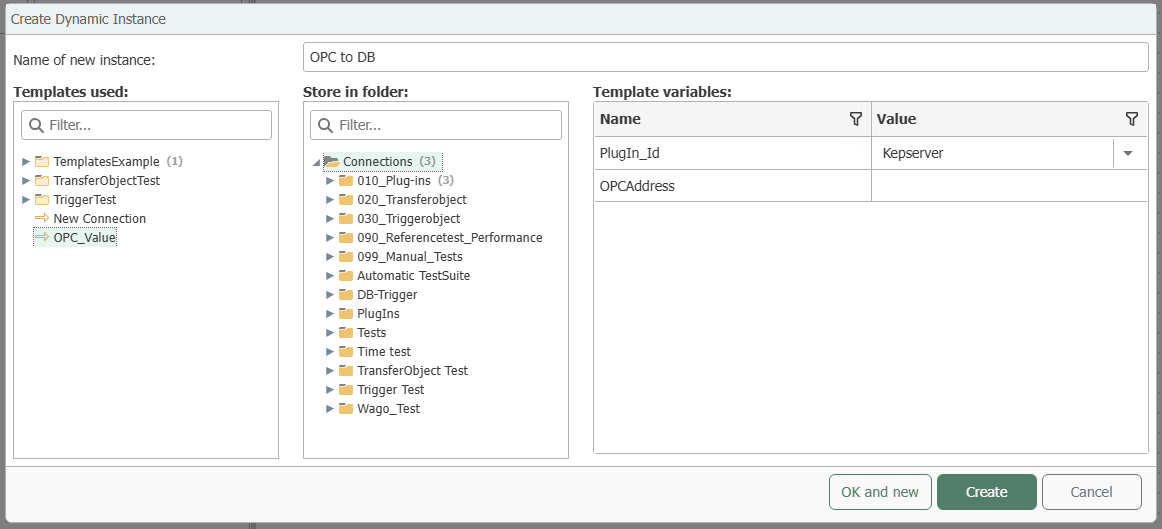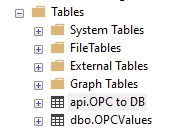Creating dynamic instances
Attention: Dynamic instances are tables which are created in external MS SQL tables.
If you want to generate dynamic connections please select the “Connections” snap-in and use the option “create instance” point “create dynamic instance”
If you selected like described, you will see a dialog and you can, like you know from normal instances, select a name and default values for the dynamic instance.

Create Dynamic Instance
If you entered everything you need, confirmed with “Create” and published the dynamic instance you will get a new table in the database. These tables will use the “api” schema. The table is named like the instance you created. Please do not change this name!
Note: We recommend to create a database user which has access to the api tables only. For this you will find the “apiRole” in the database.

Create Dynamic Instance
Within these tables you will find a database field for every variable of your instance. Additional you will find the fields [ID], [OpcR_Changed] and [InstanceName]. To create a new connection you need to insert a new row to this table and fill out the variables and the [InstanceName] field. If you didn't entered a value for a variable, the default value will be selected automatically.

Edit of the tabel "api.OPC to DB"
Note: As you can see in the picture, some connections need a PlugIn_Id. You will find the IDs of your plugins by using the view “api.View_PlugInInstances” of the “OPCRouterRuntime” database.
The columns [ID] and [OpcR_Changed] are filled out by the OPC Router, the value of [InstanceName] needs to be unique and is the name of your connection. You can use backslashes within the instance name to create folders for the runtime.
Attention: The created connections are active immediatley and don't need to get publishes again!
Maybe you need to refresh the State snapin to display the dynamic instances.
 (12) (5) (10)-dbaf3f4d56aa2c9c69a53676c08931af.png)
.png)
Productive Dynamic Instance